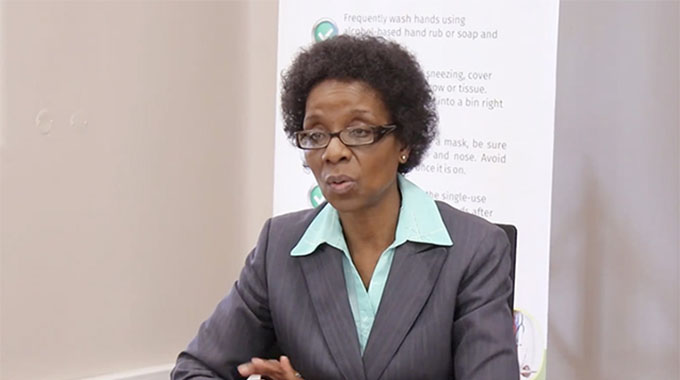Study rules out post-COVID-19 conditions in hospitalized patients in South Africa

Sangeeta Paul, Reviewed by Aimee Molineux
In a recent study posted to the medRxiv* preprint server, an interdisciplinary team of researchers from South Africa and the United Kingdom (UK) conducted a longitudinal cohort observational study on severe acute respiratory syndrome coronavirus 2 (SARS-CoV-2) patients for serial follow-up.
They determined the prevalence and risk factors for post coronavirus disease 2019 (COVID-19) condition (PCC) in patients after three months of hospitalization during the second and third wave of COVID-19 pandemic in South Africa.
The World Health Organization (WHO) defined PCC as a wide range of ongoing, new, or returning health problems experienced by COVID-19 survivors. To date, limited information is available about the ongoing and long-term complications of COVID-19, which represented an emerging public health priority.
In South Africa, more than 70% of people have contracted SARS-CoV-2 infection to date. The impact of PCC could be worse in Africa due to unreliable economic situations and poor access to health care services. This study was developed to establish how PCC has impacted COVID-19 patients in the long run and to determine population subgroups at risk in South Africa.
Study design
In this study, the National Hospital Surveillance System- DATCOV identified hospitalized SARS-CoV-2 patients, and baseline characteristics like demographic features, comorbidities, and hospital admissions of patients were retrieved. Random selection of participants was performed telephonically one month after hospital discharge with follow-up assessment through standardized questionnaires at three months, six months, and 12 months.
A standardized case report form (CRF) and follow-up protocol implemented by an open-access tool – International severe acute respiratory and emerging infections consortium (ISARIC) – detected patient variables. Research electronic data capture (REDCap) repository hosted by the University of Oxford was used to store patient data.
The authors used median and interquartile range (IQR) to express the continuous data of the study. Five multivariable logistic regression models were developed and used to assess parameters associated with PCC.
Findings
The findings of the study demonstrated that among the 1,873 SARS-CoV-2 participants followed post three months of hospital discharge, over 89% of participants reported symptoms during the acute phase of COVID-19. Among the participants reporting acute symptoms 7.6%, 11.3%, 13.2%, and 57.2% reported one, two, three, and four or more COVID-19-related symptoms, respectively. The most frequently reported COVID-19 symptoms during the acute phase included malaise (56.8%), breathlessness (50.3%), fever (46.2%), croup (45.3%), and headache (37.2%).
Related Stories
Viral load reduction effectiveness of SARS-CoV-2 BNT162b2 mRNA booster vaccine wanes with time
Origins and evolutions of SARS-CoV-2 Alpha variant in the UK
Engineered SARS-CoV-2 immunogens elicit broadly neutralizing antibodies
Post three months of hospital discharge, over 66% of participants reported new or persistent COVID-19 symptoms. Among these 19.8%, 14.8%, 9.6%, and 22.5% of participants reported one, two, three, and four or more persistent symptoms, respectively. The most frequent symptoms were fatigue (50.3%), breathlessness (23.4%), lack of concentration or confusion (17.5%), headache (13.8%), and blurred vision (10.1%).
A decline of over 82% was observed in the prevalence of persistent symptoms at one month to around 66% at three months post-hospital discharge. The most frequently reported COVID-19 symptoms in patients one month post hospital discharge were fatigue (64.9%), breathlessness (34.8%), headache (20.0%), weakness in arms or legs (18.8%), and lack of concentration/confusion (16.0%).
The authors analyzed the effect of persistent symptoms on lifestyle and noted that 11.6%, 13.6%, and 4.6% of participants reported problems in mobility, performing routine activities, and self-care, respectively.
Over 17% of participants experienced pain of different intensities. Participants also reported anxiety/depression of mild (11.9%), moderate (6.0%), and severe (2.6%) intensities. More females experienced these symptoms compared to males. Post COVID-19, 21.8%, 14.3%, and 9.6% participants reported problems remembering, walking, and seeing, respectively.
Among the studied participants, over 44% of participants consulted general practitioners, 4.4% required hospital readmission, and more than 1% required supplemental oxygen post three months of hospital discharge.
More than 2% of the studied participants reported occupation change post three months of COVID-19, and over 31% of occupation change was attributed to the impact of PCC. The social habits survey showed a reduction of over 24% and 65% in smoking and alcohol intake, respectively, in participants post three months of hospitalization as compared to pre-COVID- 19 diagnosis. In addition, more than 56% and 30% of patients had a healthier diet and exercised regularly three months after COVID-19 infection.
Multivariable analysis revealed that factors such as >65 years, female sex, mixed ethnicity, oxygen requirement at admission were associated with new or persistent symptoms.
Conclusion
The findings of the study demonstrated an increased prevalence of persistent symptoms in SARS-CoV-2 patients following three months post-hospital discharge that affected the health, lifestyle, and occupation of COVID-19 survivors.
The information gathered in the study will inform public health measures in Africa to identify individuals at high risk of developing PCC and to provide adequate patient care, support, and health service planning to these patients.
The authors warrant the need for further analysis to assess the COVID-19 vaccination’s effect on PCC and to compare PCC during different SARS-CoV-2 variant-led waves in South Africa.- https://www.news-medical.net/









Comments